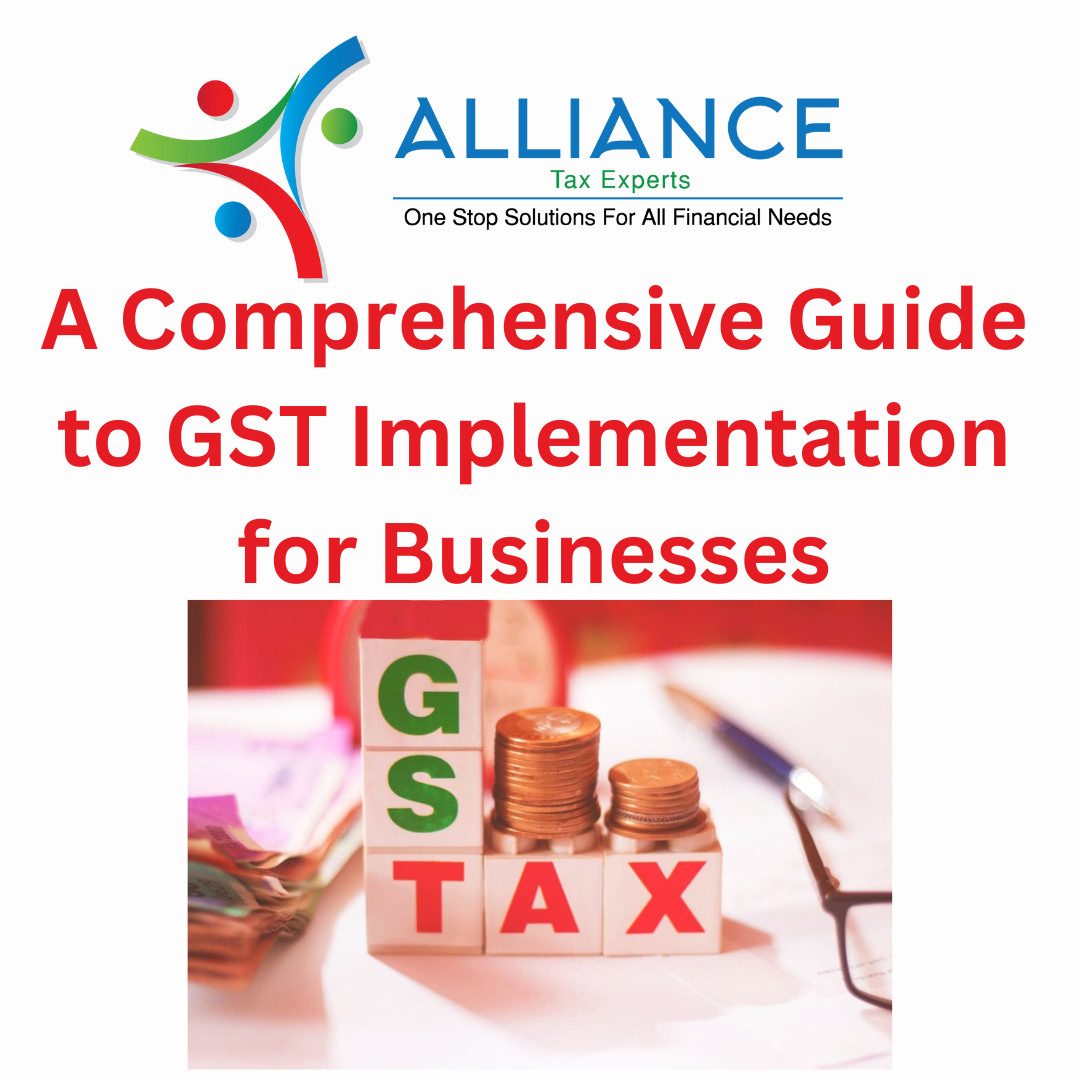
14 Feb
A Comprehensive Guide to GST Implementation for Businesses
A
Comprehensive Guide to GST Implementation for Businesses
Introduction: Goods
and Services Tax (GST) is a game-changing tax reform in India that has
simplified the indirect tax structure by replacing multiple taxes with a single
tax. GST has made compliance easier for businesses by reducing the number of
returns to be filed and unifying tax rates across the country. In this blog, we
will provide a comprehensive guide on GST implementation, covering
registration, compliance, and returns.
GST Registration: Every
business that is involved in the supply of goods or services and has an annual
turnover exceeding Rs. 20 lakhs is required to register for GST. The
registration process is entirely online, and the documents required include
PAN, Aadhar, bank details, and business registration documents. Once
registered, a GST Identification Number (GSTIN) is generated, which is used to
file returns and pay taxes.
GST Compliance: Under
GST, businesses are required to maintain detailed records of their transactions
and file returns on a monthly, quarterly or annual basis, depending on the
turnover. The various types of returns that businesses are required to file
under GST include GSTR-1, GSTR-2, and GSTR-3. It is crucial to comply with GST
regulations to avoid penalties and legal action.
GST Returns: GST
returns are filed electronically on the GST portal. GSTR-1 is a return that
needs to be filed by businesses showing their sales. GSTR-2 is a return that
needs to be filed by businesses showing their purchases, and GSTR-3 is an
auto-generated return showing the tax liability of the business. GSTR-4 is a
quarterly return filed by businesses with a turnover of up to Rs. 1.5 crore.
Input Tax Credit: Input
Tax Credit (ITC) is a mechanism that allows businesses to set off the GST paid
on purchases against the GST collected on sales. ITC can be claimed on all
goods and services used for business purposes, except for a few exceptions. It
is crucial to maintain proper records of ITC to avoid any discrepancies during
the GST audit.
Conclusion: GST
implementation is a crucial step for businesses in India, and it is essential
to understand the registration process, compliance requirements, and return
filing process. In this blog, we have provided a comprehensive guide to GST
implementation, covering all essential aspects of GST. Businesses that comply
with GST regulations will benefit from reduced compliance costs and improved
transparency in the tax system.
A Comprehensive
Guide to GST Implementation for Businesses
Regards
Santosh Patil
ICA & MBA
Founder
Alliance Tax
Experts
9769201316
#GSTregistration #GSTreturnfiling #GSTrates #GSTcompliance #GSTinvoice #GSTtax #GSTinputtaxcredit #GSTewaybill #GSTcouncil #GSTlaws #GSTimpactonbusinesses #GSTFAQs #GSTsoftware #GSTtaxslab #GSTrefunds #GSTcompliancerating #GSTlogin #GSTamendment #GSTreturnstatus #GSTcompliancedeadline #GSTimpactontheeconomy #GSTtaxcalculator #GSTtransition #GSTconsultant #GSTadvisoryservices #GSTcomplianceconsultant #GSTreturnfilingconsultant #GSTregistrationconsultant #GSTauditservices #GSTtaxconsultant #GSTexpert #GSTconsultingfirm #GSTtaxplanningconsultant #GSTfinancialconsultant #GSTaccountingconsultant #GSTauditconsultant #GSTlitigationconsultant #alliancetaxexperts